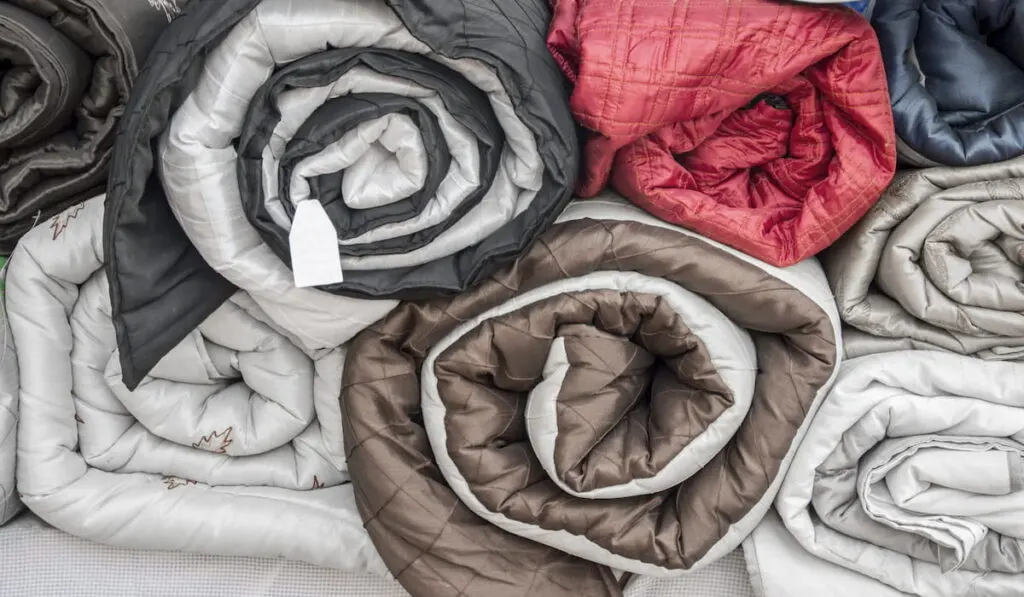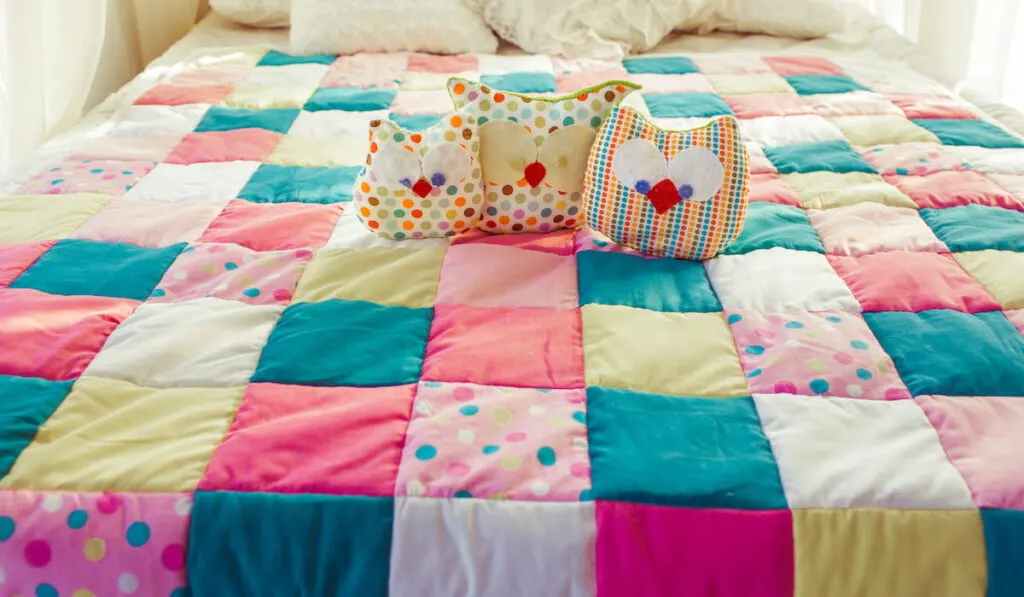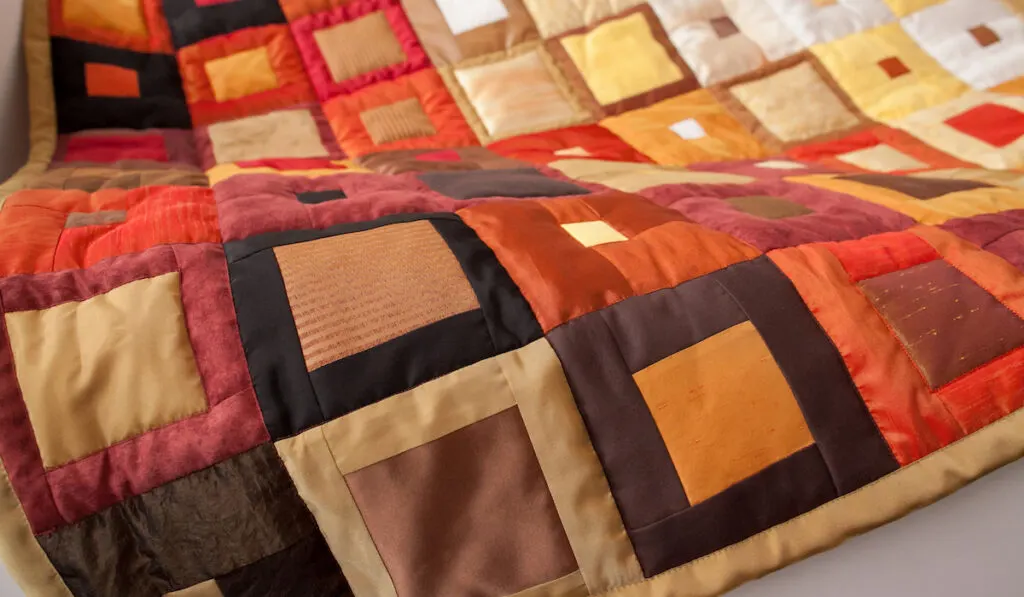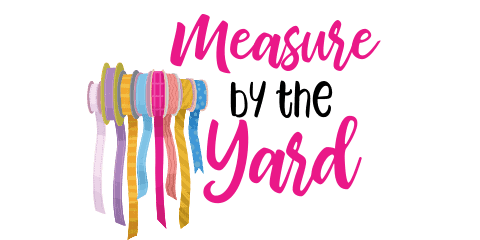Have you ever gone shopping for a quilt only to discover that they are more expensive than regular comforters?
Why are quilts so expensive?
Quilts are expensive because of the level of craftsmanship required, the cost of the materials used in production, and the design, among other factors.
Making a quilt requires different fabrics to be evenly cut and sewn together to form a blanket. A basic quilt that is 70 inches in length and 50 inches wide might cost you $400 to over $1000.
8 Reasons Why Quilts Cost So Much
Here are some reasons why quilts are quite expensive.
1. The Craftsmanship
Experienced quilters have the expertise and pay great attention to detail. A handcrafted quilt will have unique detailing compared to a mass-produced quilt.
For example, a handmade quilt will have neat piecework that matches corners cleanly. You’ll also notice an even, dense distribution of the quilting stitches over the whole quilt. The filling typically stays in place and doesn’t move when washing the quilt.
Mass-produced quilts may appear stitched together, but they usually only have a patchwork print and are single cloth quilts. You’ll notice that the fabric is not pieced together, but stitched along the print lines to create a patchwork effect. These quilts won’t have dense stitching, which makes them sag when you wash them.

2. Materials Used to Make a Quilt
Quilts are made from high-quality fabrics that are easy to wash and dry. Significant yardage of fabric goes into making a quilt.
Quilts are made of a top, batting, and bottom—three layers that take up lots of fabric. The high production costs also contribute to the fabric’s surging prices.
The cost of fabric production involves labor, transport, and other utilities. Manufacturers not only spend a lot to acquire the needed materials, but they also use dyes and other materials during production. All these costs add up the production costs to the manufacturers, and in turn, they are forced to sell the fabric at a high cost.
Sourcing raw materials also take time, especially when looking for natural fibers. While you may find synthetic fabrics, they don’t make quality quilts.
Producing fabrics also involves labor as the threads need weaving. Textile companies spend a lot on both machine processing and manual labor, and these costs are passed down to the cost of the materials.
Branded fabrics have a unique texture and quality. Popular manufacturers and designers sell these fabrics at a higher price compared to regular quilt materials.
3. Cost of Production
Skilled workers earn about $15 an hour and experienced quilters can charge up to $25 per hour. A custom-made queen-size quilt takes close to 40 hours, which includes cutting the fabric, making the patterns, and sewing the pieces together on a regular machine or a longarm machine.
That means that an experienced quilter would charge $25×40=$1000 for labor. And that doesn’t include the cost of the fabric!
Quilters use expensive sewing machines to sew and design quilts. These machines could cost anywhere between $4,000 to over $30,000. Although quilters won’t place the entire cost into one quilt, the price must be paid through the sale of quilts. The price of each quilt includes a part of the sewing machine’s cost.

4. Design and Pattern of Quilts
Quilting has, over the years, evolved as designers experiment with different designs and patterns. A quilter needs to be creative to figure out what makes the quilt beautiful.
It takes time to come up with unique designs, and this reflects on the cost of the final product.
5. The Cost of Labor
Labor costs largely account for the overall cost of the quilts. Making quilts is a hands-on craft that takes several hours of research and planning before even getting started on the process.
A quilt needs several pieces of fabric to be cut and sewn together. Sewing must be done. An experienced quilt maker will charge more compared to one who is starting. The rates may vary depending on your location.
Binding also adds to the total labor costs. Some quiltmakers will charge more when attaching the binding to the back by hand or for clients looking for mitered junctions.
Quality quilts don’t have seams coming loose. They also have even stitches. Most hand-made quilts have six stitches per inch. An experienced quilter will have more even stitches per inch and will charge more for their quilts.
6. Pricing Difference
You may find that one retailer charges more for the same quilt if it’s in a specific size or color. Retailers can decide to set their prices and this reflects on the cost of the quilts.
The pricing difference could be because a retailer considers a particular item popular or he may decide to create a high-profit margin on an item. Sometimes you may find a retailer has priced a particular quilt lower as he wants to get rid of older stock.

7. Taxation
Federal and state governments raise money through taxes. Property taxes, income tax, and sales tax are the three types of taxes a quilter may incur.
For example, a quilter who lives in California and makes $200,000 a year, has a marginal tax rate of 46.9%, meaning they may be taxed $70,935. The tax takes a huge chunk of the quilter’s total income, and that means they have to price the quilt in a way that they also make a profit and can cover the taxes.
8. Popularity With Collectors
Another reason for the high price tag on quilts is their popularity with collectors. Some people are also preserving them for the next generation. Collectors are opting now for nautical mariner patterns and star designs that were popular in the 1900s.
Back in 1867, the Reconciliation Quilt was sold for $264,000 as it reflected scenes of hope. Most museum-quality quilts still sell at a premium.
Final Thoughts
While you may grab a cheap quilt at Walmart or Amazon, a quality, a handmade quilt will cost you a lot more given the cost of production, the fabric used, the design, cost of labor, and the experience of the quilter.
Hopefully, you now have an idea why quilts can be quite expensive. A lot of money and time goes into making quilts, which translates into the high price.
Resources
- https://www.thesprucecrafts.com/machine-quilting-options-for-quilters-2821931
- https://crafttribeonline.com/is-quilting-an-expensive-hobby-lets-break-it-down/
- https://sewingmachineclub.com/cost-of-making-a-quilt
- http://encyclopediaofalabama.org/article/h-1664
- https://www.allpeoplequilt.com/how-to-quilt/quilting-basics/antique-quilts-how-to-buy-repair-wash-and-store-vintage-finds
